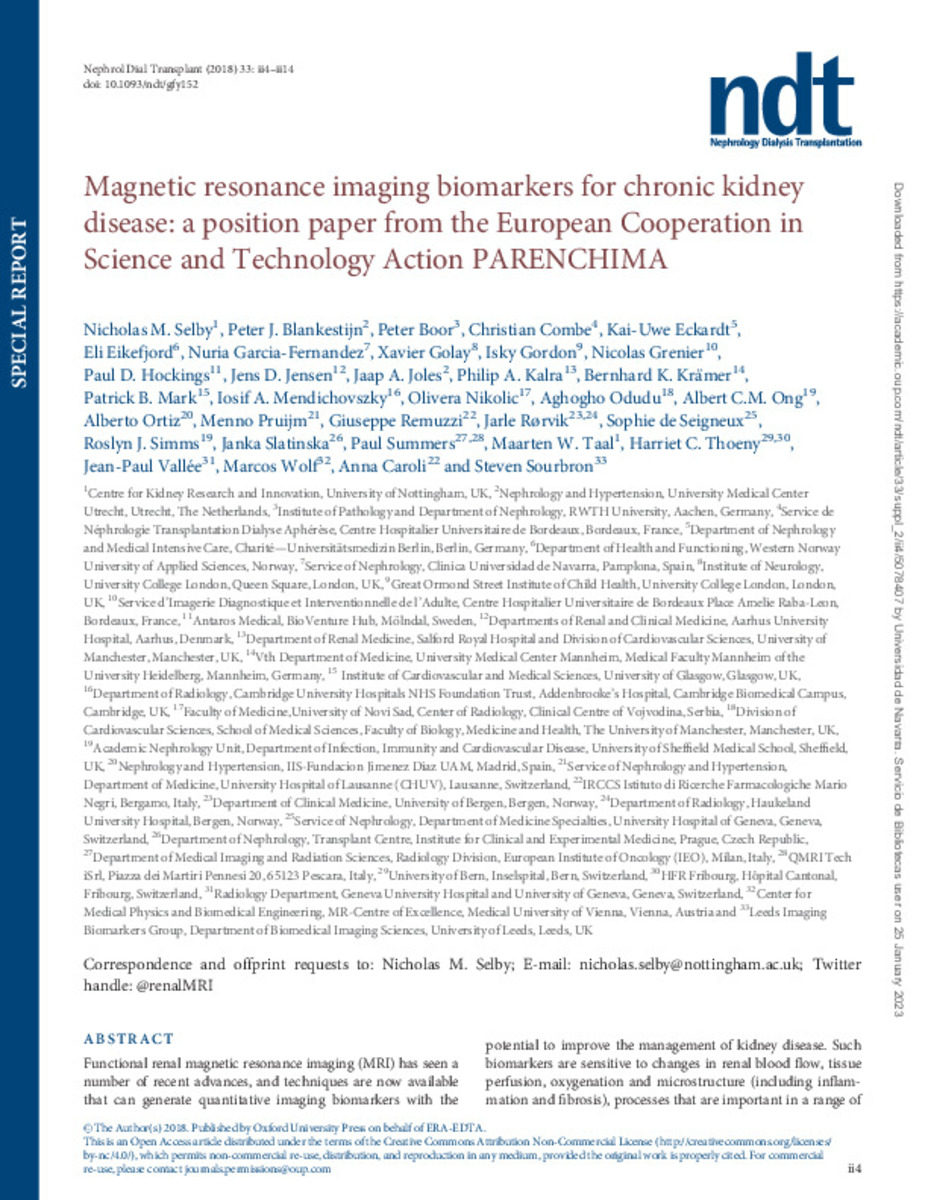Magnetic resonance imaging biomarkers for chronic kidney disease: a position paper from the European Cooperation in Science and Technology Action PARENCHIMA
Palabras clave :
Biomarker
Chronic kidney disease
Fibrosis
Inflammation
MRI
Fecha de publicación :
2018
Editorial :
Oxford University Press
Nota:
This is an Open Access article distributed under the terms of the Creative Commons Attribution Non-Commercial License (http://creativecommons.org/licenses/
by-nc/4.0/), which permits non-commercial re-use, distribution, and reproduction in any medium, provided the original work is properly cited.
Cita:
Selby, N.M. (Nicholas M.); Blankestijn, P.J. (Peter J.); Boor, P. (Peter); et al. "Magnetic resonance imaging biomarkers for chronic kidney disease: a position paper from the European Cooperation in Science and Technology Action PARENCHIMA". Nephrology dialysis transplantation. 33 (Supl.2), 2018, ii4 - ii14
Aparece en las colecciones:
Estadísticas e impacto
0 citas en

0 citas en

Los ítems de Dadun están protegidos por copyright, con todos los derechos reservados, a menos que se indique lo contrario.







